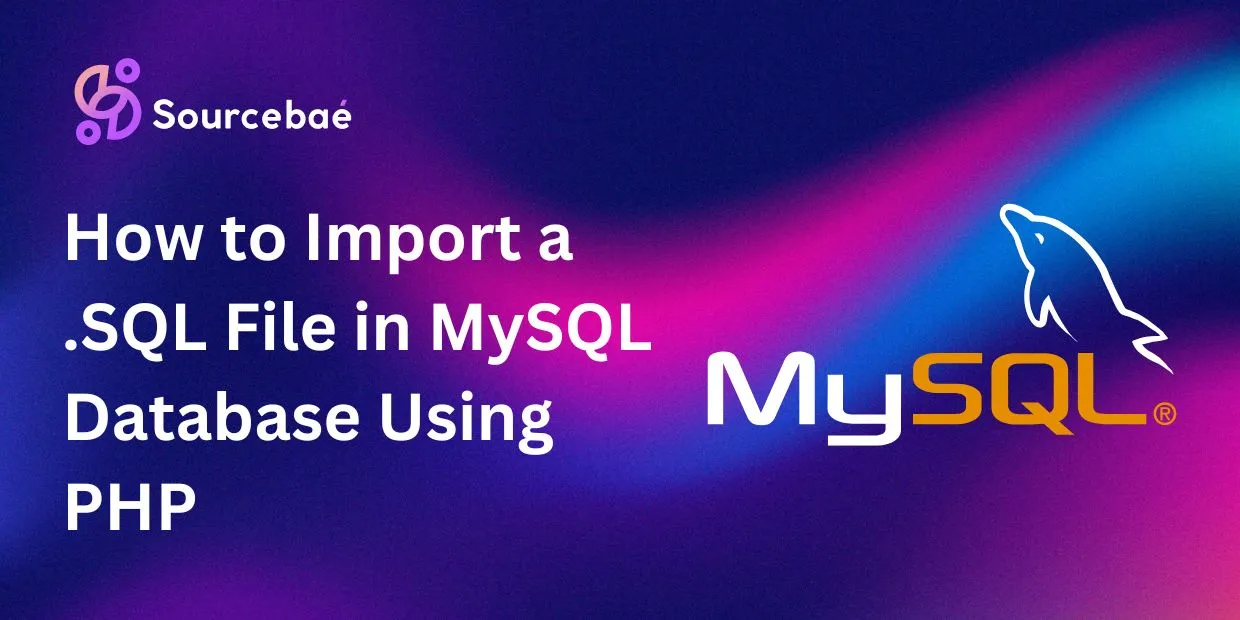If you’re a web developer or managing a database-driven website, you might encounter the need to import a .SQL file into your MySQL database using PHP. Whether it’s for migrating data, restoring backups, or updating your database, this guide will walk you through the process step by step. We’ll explore the ins and outs of this task, providing you with valuable insights and expert tips to ensure a seamless experience.
The Basics of SQL File Import
Before diving into the details, let’s clarify the fundamentals.
How do I import a .SQL file in MySQL database using PHP?
To begin, you need to have a .SQL file ready, containing the database structure and data you wish to import. Follow these steps to get started:
- Access Your Database: Make sure you have access to the MySQL database where you intend to import the .SQL file.
- Prepare Your .SQL File: Ensure your .SQL file is correctly formatted and contains all the necessary SQL statements to create tables, insert data, and perform any other required operations.
- Create a PHP Script: You’ll need a PHP script to execute the import process. Open your favorite code editor and create a new PHP file.
- Connect to the Database: In your PHP script, establish a connection to your MySQL database using the appropriate credentials.
- Read and Execute the .SQL File: Use PHP functions like
file_get_contentsto read the .SQL file and execute its content within your database. - Verify the Import: After executing the .SQL file, check your database to ensure the data has been successfully imported.
- Handle Errors: Be prepared to handle any errors that may occur during the import process. PHP provides error handling mechanisms to help you troubleshoot issues.
Common Challenges and Solutions
Importing .SQL files can sometimes be tricky. Here are some common challenges and their solutions.
Dealing with Large .SQL Files
Challenge: Importing large .SQL files may lead to script execution timeouts or memory errors.
Solution: To address this, you can split the .SQL file into smaller chunks or increase the PHP script’s execution time and memory limit in your server configuration.
Character Encoding Issues
Challenge: Character encoding mismatches can result in data corruption.
Solution: Ensure that the character encoding in your .SQL file matches the encoding of your MySQL database. You can specify the encoding within your .SQL file.
Importing Only Specific Tables
Challenge: You may want to import only specific tables from the .SQL file.
Solution: Modify your .SQL file to include only the tables you need or use SQL commands to drop unnecessary tables after import.
Frequently Asked Questions
Can I import a .SQL file with command-line tools?
Yes, you can use command-line tools like mysql to import .SQL files, but using PHP allows for greater flexibility and automation in web applications.
What should I do if I encounter SQL syntax errors during import?
Review the SQL syntax in your .SQL file and make sure it’s compatible with your MySQL version. Also, check for missing semicolons or quotation marks.
Is it possible to automate the import process?
Yes, you can automate .SQL file imports by scheduling PHP scripts to run at specific intervals using tools like cron jobs.
Are there any security concerns when importing .SQL files?
Ensure that your PHP script and server configurations are secure to prevent unauthorized access to your database during import.
Can I import .SQL files with data into an existing database?
Yes, you can import .SQL files with data into an existing database, but ensure that table names and structures match to avoid conflicts.
What if I need to revert the import process?
Always backup your database before importing .SQL files. If you need to revert, you can restore your backup.
Conclusion
Importing a .SQL file into a MySQL database using PHP is an essential skill for anyone working with databases in web development. By following the steps outlined in this guide and addressing common challenges, you’ll be well-equipped to handle this task efficiently. Remember to maintain the security and integrity of your database throughout the process, and you’ll achieve a successful import every time.
READ MORE: How do I update a JSON column in MySQL?






